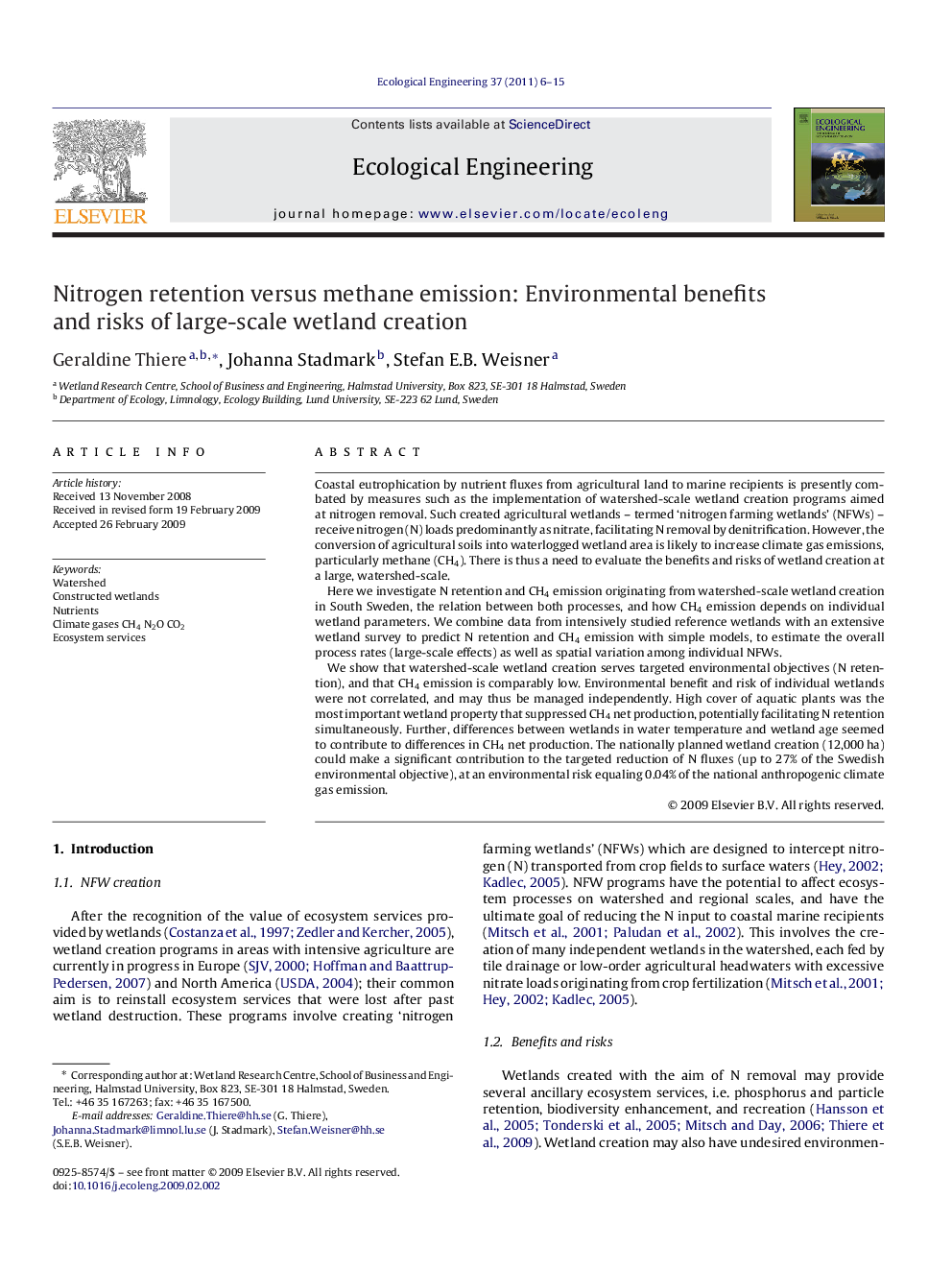| Article ID | Journal | Published Year | Pages | File Type |
|---|---|---|---|---|
| 4390425 | Ecological Engineering | 2011 | 10 Pages |
Abstract
We show that watershed-scale wetland creation serves targeted environmental objectives (N retention), and that CH4 emission is comparably low. Environmental benefit and risk of individual wetlands were not correlated, and may thus be managed independently. High cover of aquatic plants was the most important wetland property that suppressed CH4 net production, potentially facilitating N retention simultaneously. Further, differences between wetlands in water temperature and wetland age seemed to contribute to differences in CH4 net production. The nationally planned wetland creation (12,000Â ha) could make a significant contribution to the targeted reduction of N fluxes (up to 27% of the Swedish environmental objective), at an environmental risk equaling 0.04% of the national anthropogenic climate gas emission.
Related Topics
Life Sciences
Agricultural and Biological Sciences
Ecology, Evolution, Behavior and Systematics
Authors
Geraldine Thiere, Johanna Stadmark, Stefan E.B. Weisner,
